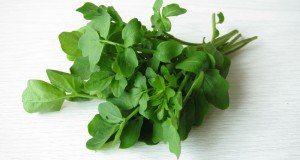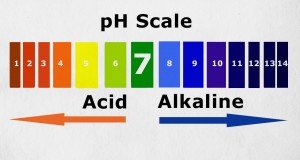Seaweed compound shows promise in cancer research, study finds
 (NaturalHealth365) In 2023, it is anticipated that around 297,790 new instances of invasive breast cancer will be detected among women in the United States. But research now shows seaweed may be a safe, natural superfood that could alter the face of cancer treatment as we know it.
(NaturalHealth365) In 2023, it is anticipated that around 297,790 new instances of invasive breast cancer will be detected among women in the United States. But research now shows seaweed may be a safe, natural superfood that could alter the face of cancer treatment as we know it.
Today, we’ll reveal the science behind killing cancer cells with seaweed.
Scientific research affirms seaweed’s time-honored medicinal value
While ancient healing systems – including traditional Chinese medicine and Ayurveda – have long used seaweed to fight cancer, Western medicine has been much slower to catch on.
Seaweed’s first recorded use in mainstream medicine took place as part of a study in Italy in the 1960s – where an impressive 68 percent of 162 patients recovered after receiving a combination of intramuscular seaweed injections and chemotherapy.
Puzzlingly, there was a lapse of 20 years in which no further research was performed. Then, in the mid-1980s, Japanese researchers undertook a series of studies – and declared seaweed extracts to be more effective against cancer than conventional chemotherapeutic agents.
Since then, numerous studies have highlighted seaweed’s ability to inhibit the growth of experimentally-generated cancers and to prevent cancer cells from growing and reproducing.
A Japanese study found that wakame seaweed suppressed breast cancer mammary tumors. Research conducted at the University of California at Berkeley suggests that consumption of bladderwrack, a type of brown seaweed, can reduce the risk of estrogen-related cancers.
Finally, a study found that polysaccharides in Sargassum vulgare – yet another type of brown seaweed, sometimes called hijiki – inhibited breast cancer tumor growth.
Seaweed’s constituents seem tailor-made to ward off cancer
Researchers believe that fucoidan – a polysaccharide found in red and brown seaweed – can directly trigger cancer cell death by promoting the production of caspase, an enzyme that helps to trigger apoptosis – or “cell suicide.” Alginic acid – another natural compound occurring in seaweed – may also contribute to seaweed’s anti-cancer effects.
Naturally high in iodine, seaweed can help correct deficiencies that might otherwise lead to the development of breast cancer.
It is also extremely rich in specific micronutrients believed to offer some protection against cancer. Seaweed is an excellent source of the antioxidant vitamins A, C, and E – as well as a good source of B vitamins such as pantothenic acid, riboflavin, and folate.
Essential minerals, including calcium and manganese, round out seaweed’s impressive nutritional profile.
How can I use seaweed to help prevent breast cancer?
The best types of seaweed to consume for breast cancer prevention are brown and red seaweeds, including wakame, kombu – or kelp – hijiki, sargassum, dulse, and Irish moss. You can try seaweed toasted, served as a side vegetable, or added to soups, stews, and salads.
Many natural healers tend to recommend whole seaweed over nutritional supplements, which are produced by processing the seaweed and then grinding it into a powder – a process that may deplete some of the nutritional value.
Of course, like any other food, be careful of the source to avoid unwanted contamination.
Important note: For some, seaweed’s high iodine content can be problematic. When kept to about .25 ounces per day, or 7 grams – the amount customarily eaten by millions in Japan – seaweed consumption is safe. However, consumption in the range of 10 to 20 grams of seaweed daily can cause thyroid issues.
To be safe, always talk to a knowledgeable holistic healthcare provider or health coach before making any changes to your dietary habits.
Sources for this article include:
NIH.gov
NIH.gov
Breastcancer.org
JeffreyDachMD.com
Seaweed.ie
BreastCancerConqueror.com











